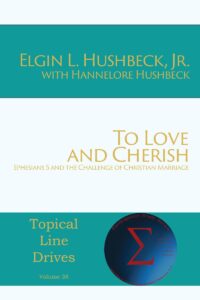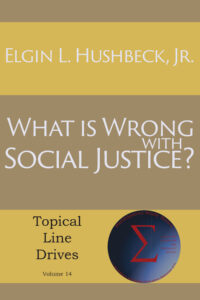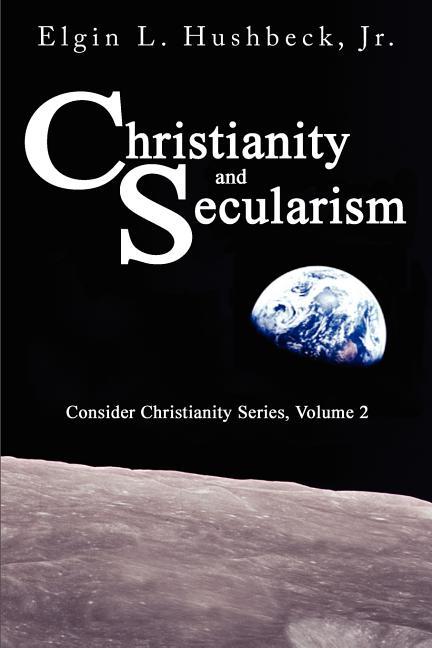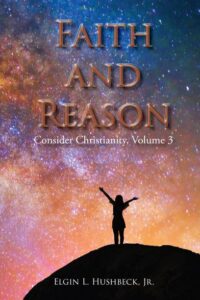Historical Understanding
Friday, November 30th, 2007 by Elgin HushbeckListen to the MP3
Nov 30, 2007, Wausau, Wi — One huge difference between Christians and their critics is the framework in which judgments are made. Often it is the differences in the framework which results in their vastly different conclusions, more than the actual evidence. One key difference is over one’s view of history.
Critics often see religion in general, and Christianity in specific, as a vastly negative force in history. For example, they see the Middle Ages as the “Dark Ages” where the former brilliance of Rome was suppressed by the Church. When the iron grip of the Church weakened, this former brilliance broke free again in the Renaissance. In fact for them the Western History of the last 1500 years has been marked by a struggle to break free of the Church and its flat earth view of the world, so as to embrace a more rational view based on science.
Despite the popularity of such thinking is it nevertheless false and misleading. For example, it never was church doctrine that the earth was flat, nor did even a large number of Christians believe in a flat earth. This is a myth that originated among the critics of Christianity in the 18th century. As for the so-called Dark Ages, historians have long since realized that this was a somewhat self-serving view of history spawned by those in the Renaissance who saw themselves as restoring the glories of Rome, and not an accurate depiction of the period historians now refer to as the Middle Ages.
In reality the Middle Ages were a time or great intellectual development that, rather than suppressing inquiry, actually laid the intellectual foundations for the Renaissance and modern science. It was from the so-called Dark Ages of Church repression that we see the origin of Universities, the beginning of experimental science, and many discoveries and innovations like the incorporation of things like the decimal system and gunpowder. It is from this period we see the invention of eyeglasses, pendulum clocks and the compass. Magna Carta comes from this period, as does the jury system and habeas corpus, along with the beginnings of representative government in the English Parliament, and the French Estates-General.
As the historian Will Durant summarized it “It would be unwise to look down with hybritic pride upon a period that produced so many great men and women.” Durant went on to add “we shall never do justice to the Middle Ages until we see the Italian Renaissance not as their repudiation but as their fulfillment.” (Age of Faith, pg 1082, 1085)
To be sure, not everything was rosy. Like any period in history the complete picture was far more mixed. When compared with today’s standards, the Middle Ages often fall short. But judging the Middle Ages by today’s standards about as valid as saying that Newton, Galileo, or other early scientist, didn’t even know what would now be called High School science, and therefore were stupid.
A more accurate standard would be to judge based on the historical norm up to the period in question. This is why Newton and Galileo are seen as great. While they may not have passed a High School science test of today, they made discoveries and scientific advances unknown until then.
Unfortunately, history is so badly taught, and poorly understood, that the average person has little understanding of even recent history (or in some cases even current events outside of sports or music). This lack of any historical understanding is why Britain and America are frequently condemned for having slaves. Until recently, slavery was an almost universal institution, and one that still exists in some areas even today. Thus what was aberrational about Britain and America was not that they had slaves, but that they led the way in abolishing the slave trade and then slavery itself.
Significantly other notable exceptions to the historical norm of slavery were Ancient Israel, and the Middle Ages. While the Bible allowed slavery, it regulated it to the point that slavery virtually disappeared from Ancient Israel. Likewise, during the Middle Ages, under the influence of the Church slavery disappeared from most of Western Europe, only to be reintroduced after the Middle Ages.
Another example would be that, while we frequently hear of the atrocities committed by the early settlers of the Americas on the native inhabitants, one of the reasons we are able to do this is that the atrocities were documented by early churchmen seeking help in stopping them. Until then such atrocities were the norm, what was aberrational was the attempt to prevent them.
So when judging the actions of those in the past, we must be careful to factor in what was historically the norm for their time. What if in a couple of centuries from now, standards have change such that eating meat, driving your own car, watching football, or anything number of things we current do without a second thought, is then seen as barbaric and/or immoral? Would we consider ourselves fairly condemned for our failure to follow such future standards?
Instead of focusing on condemning those who followed the norm of their time, would it not be better to focus on those who broke from the norm to help bring us our modern understanding? But to do this would in many cases, be to acknowledge the positive impact of Christians, such as those in the forefront of the anti-Slavery movement.
This is Elgin Hushbeck, asking you to Consider Christianity: a Faith Based on Fact.






